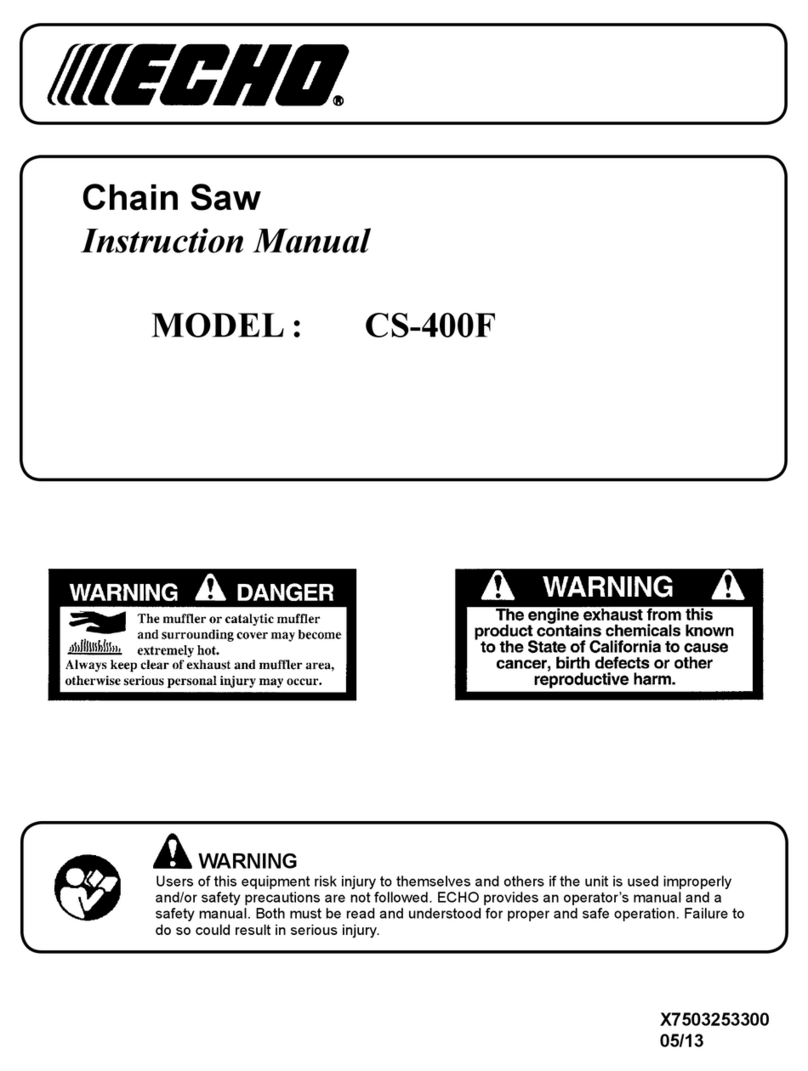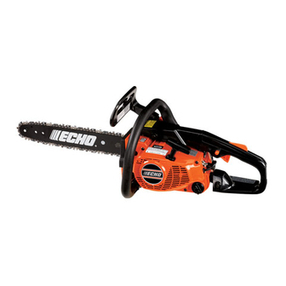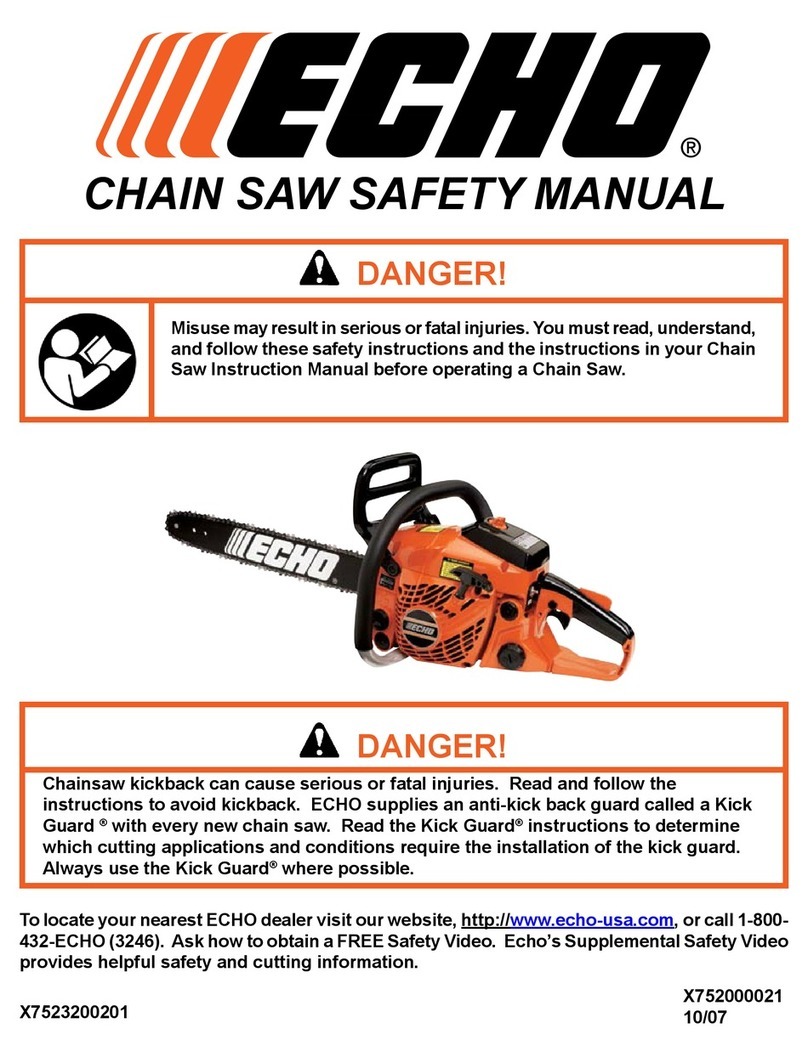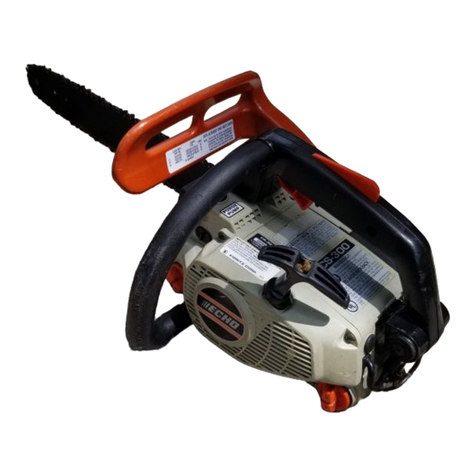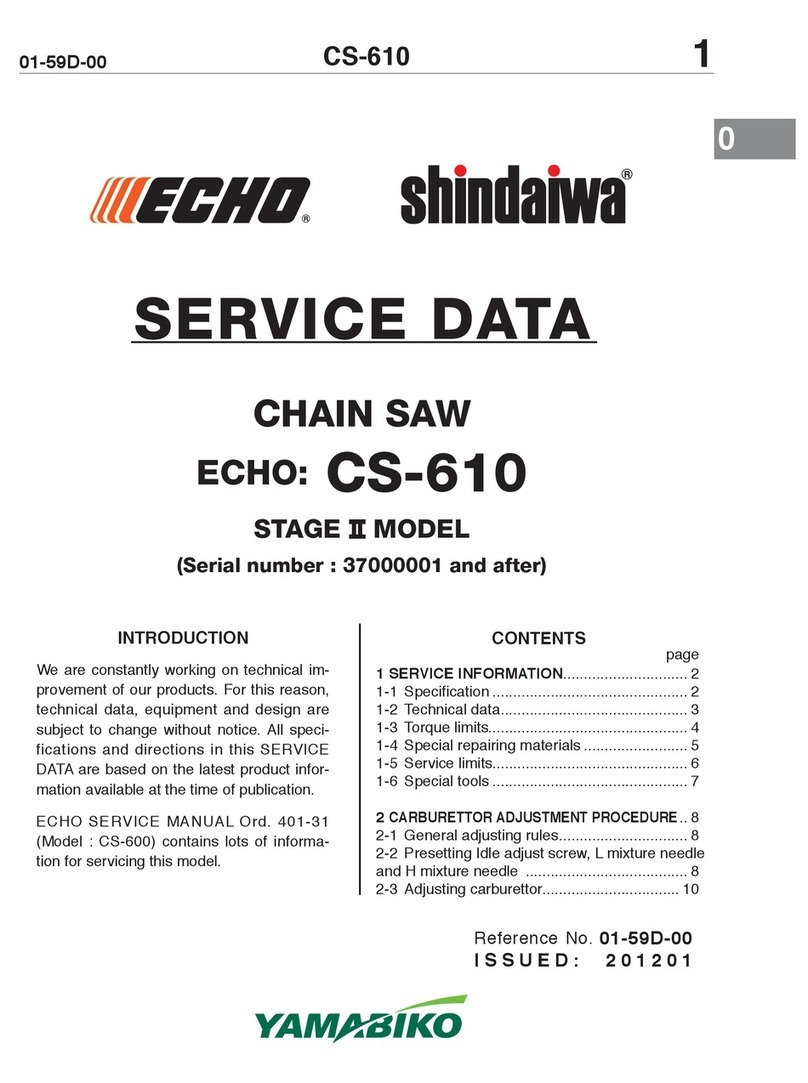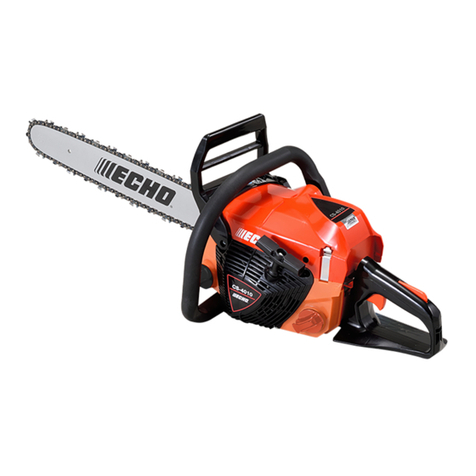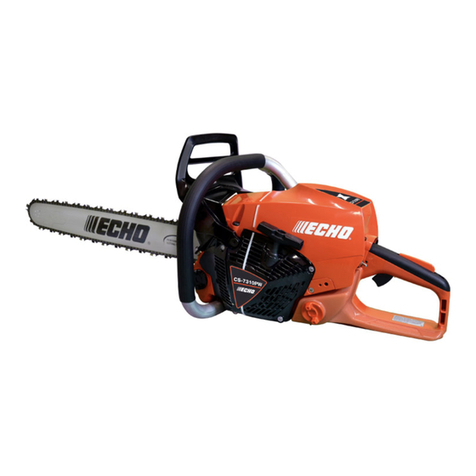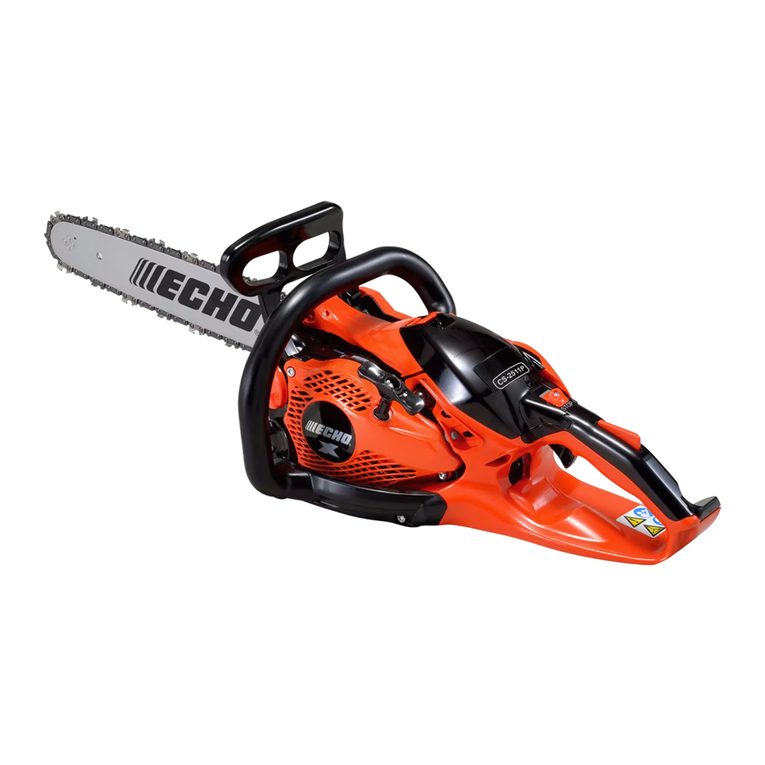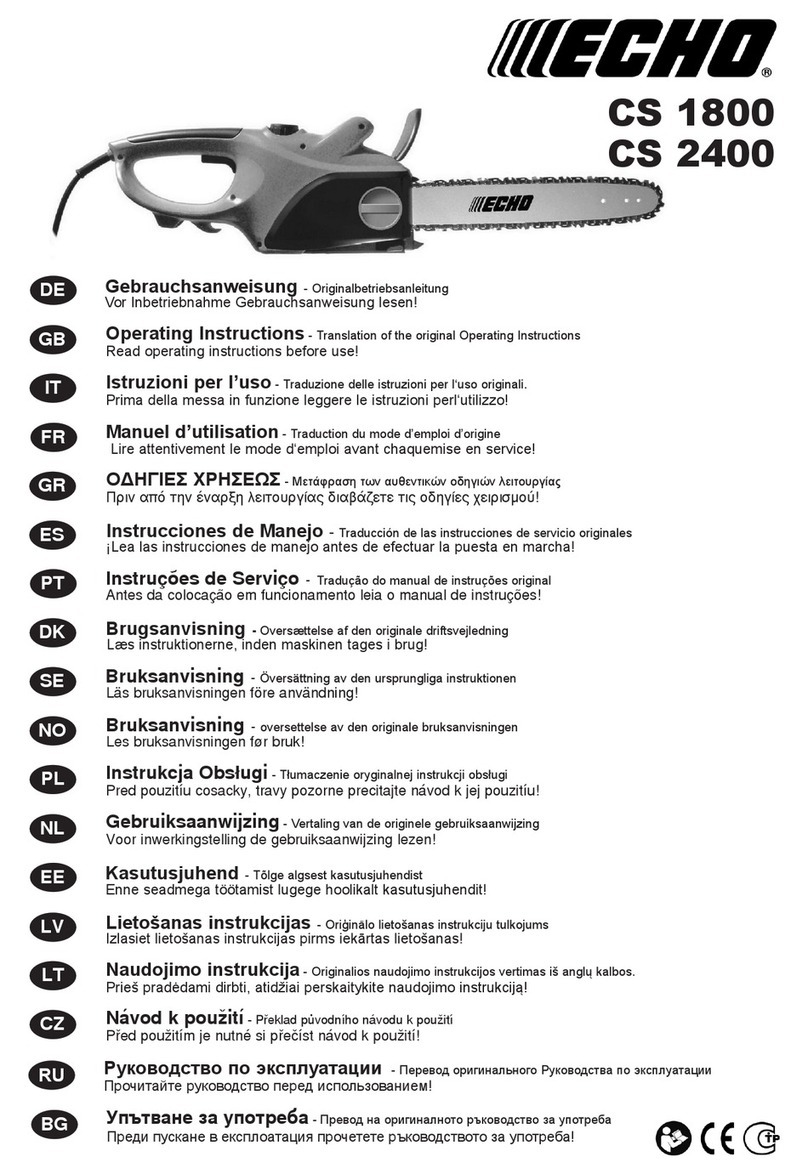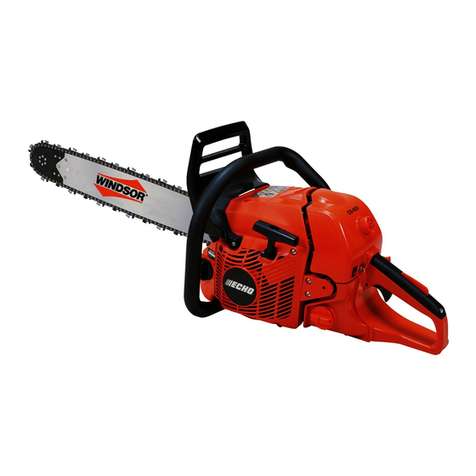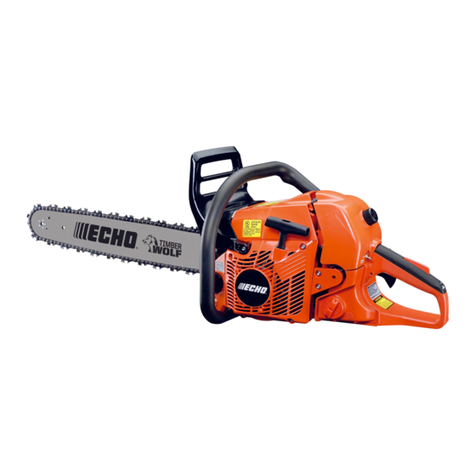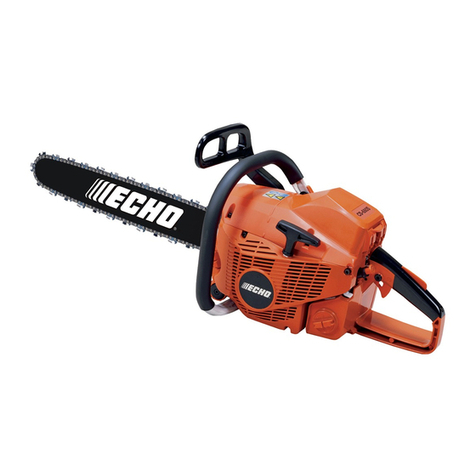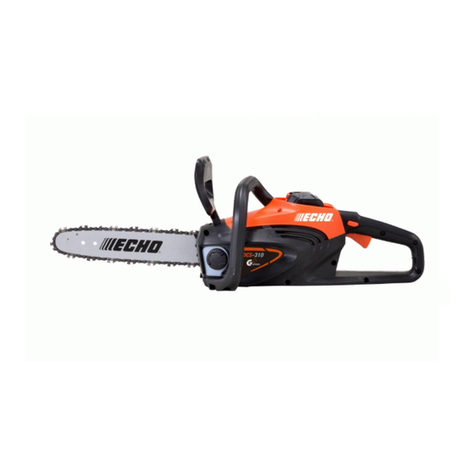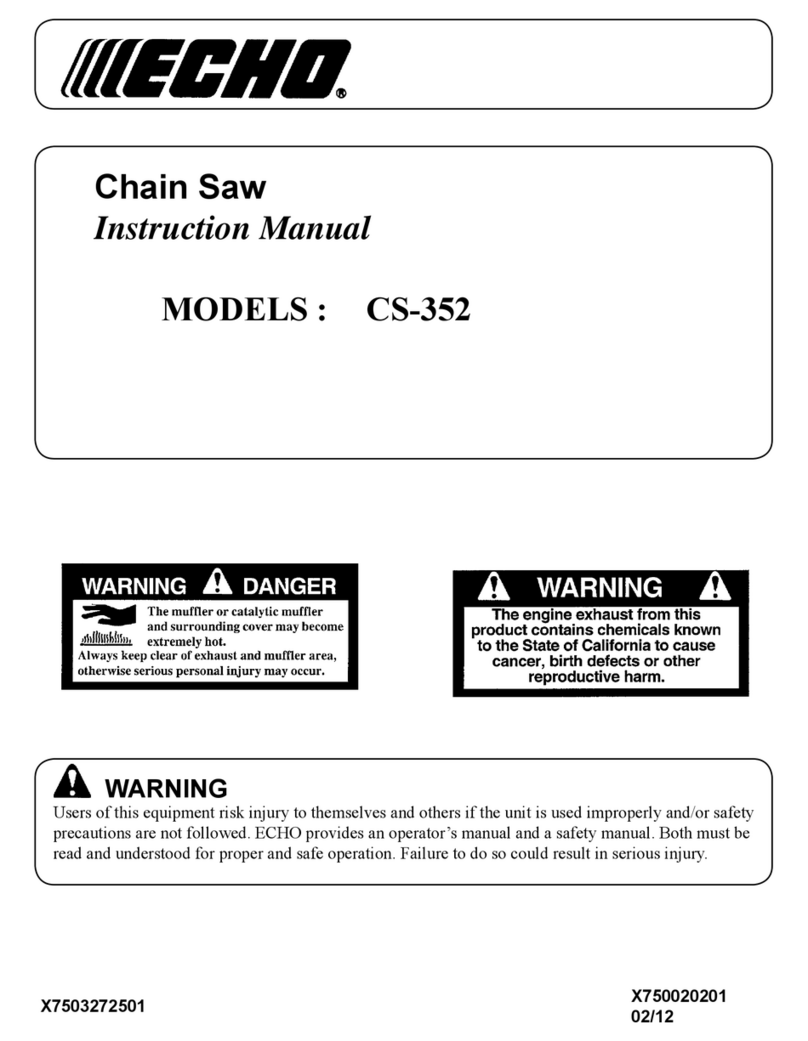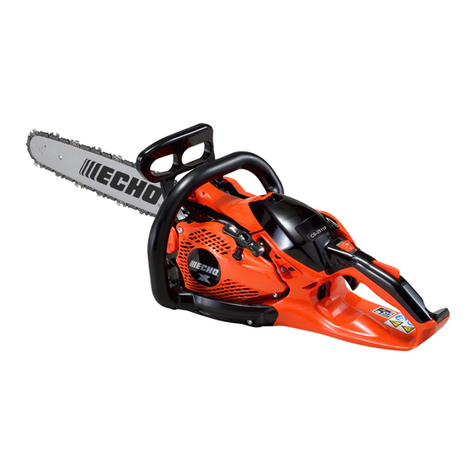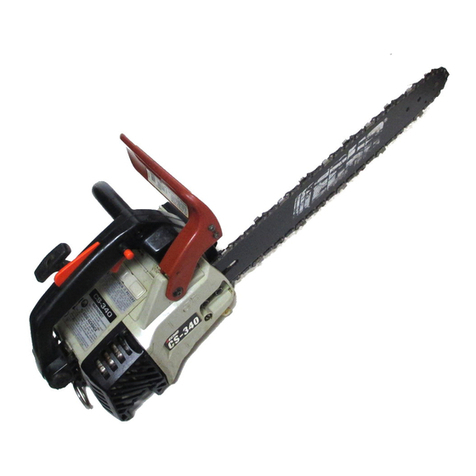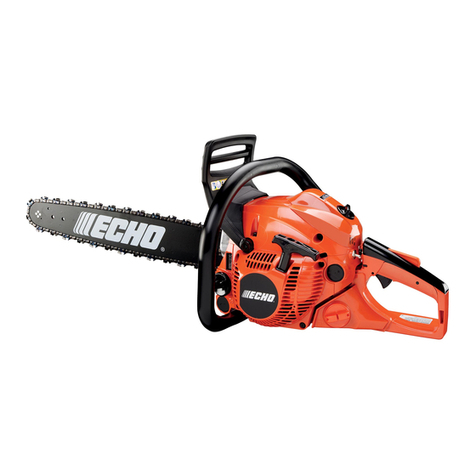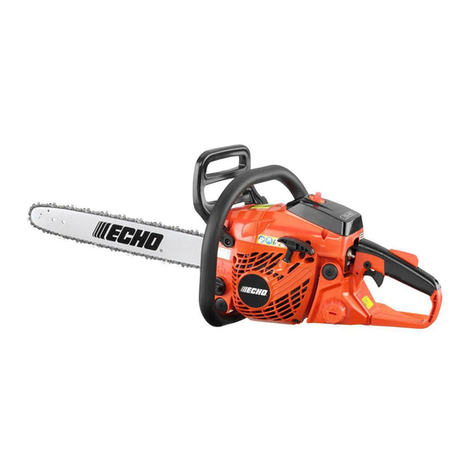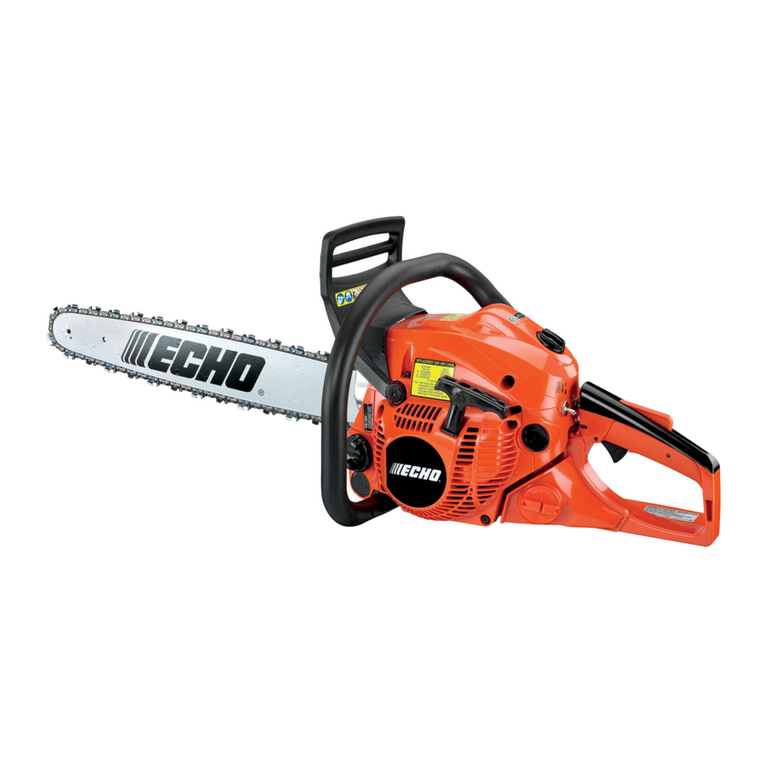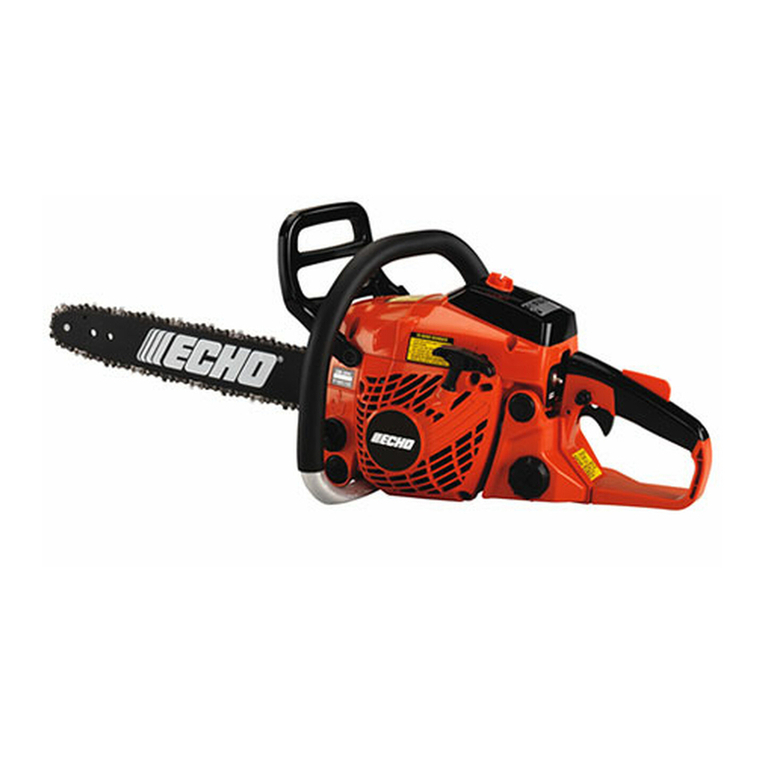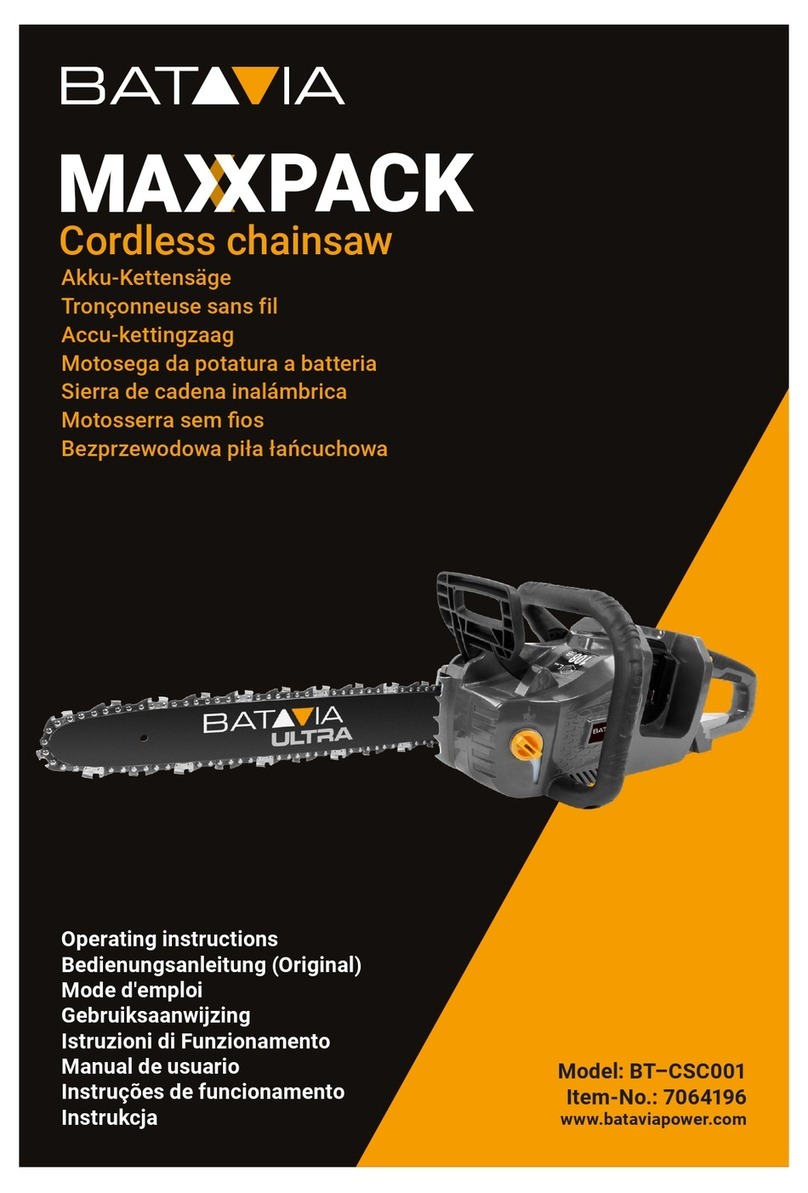
2
RULES FOR SAFE OPERATION
A. Kickback Safety Precaution for Chain Saw Users
B. Other Safety Precautions
1. Do not operate a chain saw with one hand! Se-
rious injury to the operator, helpers, bystand-
ers, or any combination of these persons may
result from one-handed operation. A chain saw
is intended for two-handed use.
2. Do not operate a chain saw when you are fa-
tigued.
3. Use safety footwear; snug-fitting clothing; pro-
tective gloves; and eye, hearing and head pro-
tection devices. Wear protective hair covering
to contain long hair.
4. Use caution when handling fuel. Move the chain
saw at least 3 m (10 feet) from the fueling point
before starting the engine.
5. Do not allow other persons to be near the chain
saw when starting or cutting with the chain saw.
Keep bystanders and animals out of the work
area.
6. Do not start cutting until you have a clear work
area, secure footing, and a planned retreat path
from the falling tree.
Copyright© 2006 By Echo, Incorporated
All Rights Reserved.
WARNING!
KICKBACK may occur when the nose or tip of the
guide bar touches an object, or when the wood
closes in and pinches the saw chain in the cut.
Tip contact in some cases may cause a lightning
fast reverse REACTION, Kicking the guide bar up
and back towards the operator. Pinching the saw
chain along the top of the guide bar may push the
guide bar rapidly back towards the operator. Ei-
ther of these reactions may cause you to lose con-
trol of the saw which could result in serious per-
sonal injury.
The Kick Guard ®device is not installed on the
guide bar when you purchase your ECHO chain
saw. The Kick Guard ®
can be used in a majority of
cutting operations, and is especially recommended
for beginners, homeowners, or chain saw novices.
Most cutting operations can be accomplished with
the Kick Guard®in place.
Do not rely exclusively upon the safety devices built
into your saw. As a chain saw user, you should take
several steps to keep your cutting jobs free from
accident or injury.
1. With a basic understanding of kickback, you
can reduce or eliminate the element of surprise.
Sudden surprise contributes to accidents.
2.Keep a good firm grip on the saw with both
hands, the right hand on the rear handle, and
the left hand on the front handle, when the en-
gine is running. Use a firm grip with thumbs and
fingers encircling the chain saw handles. A firm
grip will help you reduce kickback and main-
tain control of the saw. Don’t’ let go.
3. Make sure that the area in which you are cut-
ting is free from obstructions. Do not let the
nose of the guide bar contact a log, branch, or
any other obstruction which could be hit while
you are operating the saw.
4. Cut at high engine speeds.
5. Do not overreach or cut above shoulder height.
6. Follow manufacturer’s sharpening and main-
tenance instructions for the saw chain.
7. Only use replacement bars and chains speci-
fied by the manufacturer or the equivalent.
